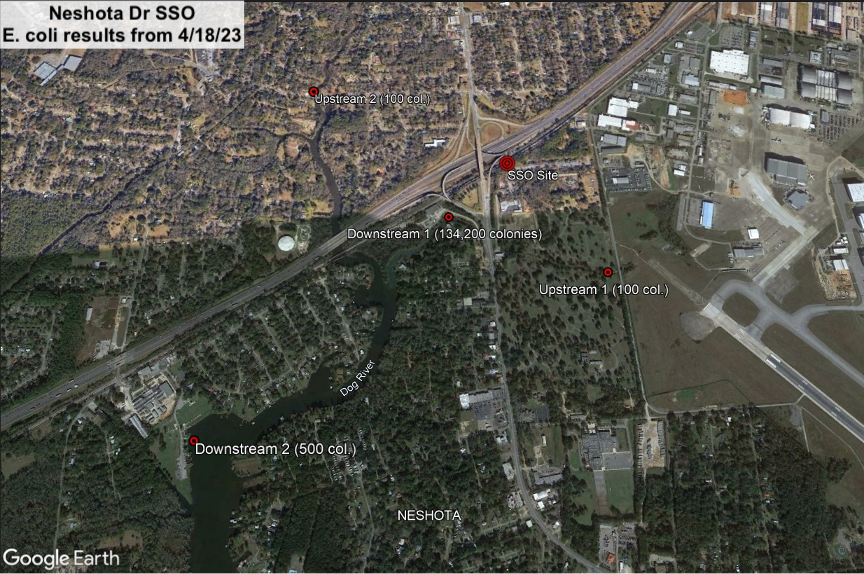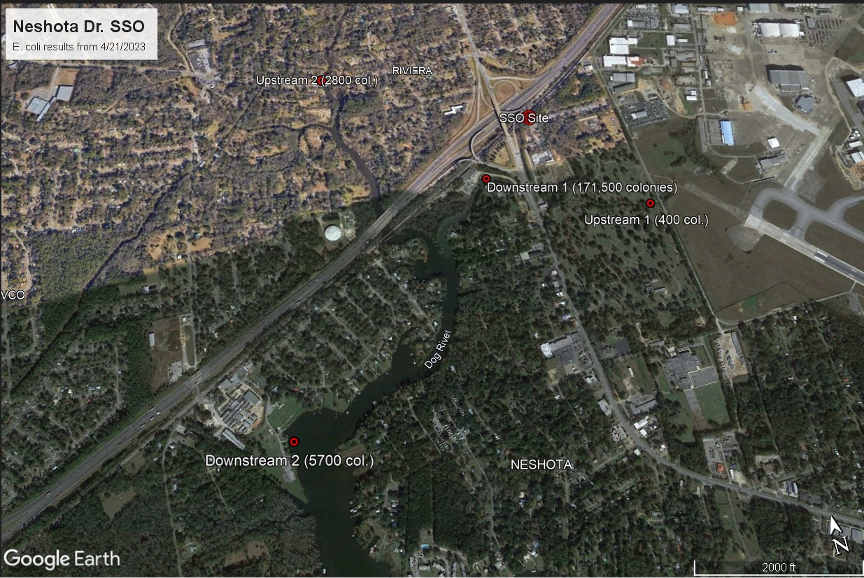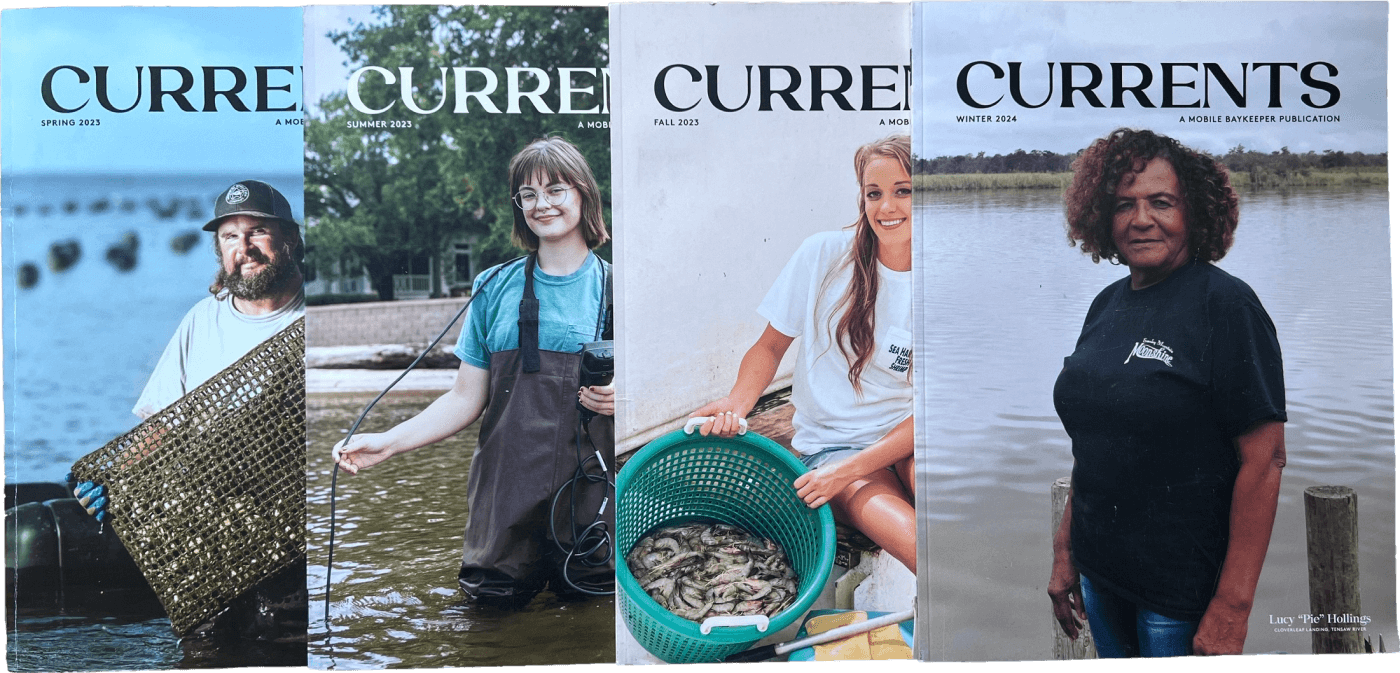
The Mobile Area Water and Sewer System (MAWSS) experienced a significant sewage spill that lasted four days and ended on April 21. The spill totaled more than 4.6 million gallons of sewage. The spill affected Rabby Creek, a tributary of Dog River.
The circumstances that led to the spill were unfortunate. MAWSS was making a much-needed infrastructure update and replacing one of the largest lines in their system, a 48-inch force main that carries much of the flow that goes to the C.C. Williams Wastewater Treatment Plant. The project installed two 36-inch lines to add redundancy to this critical line. To facilitate this change, MAWSS contractors closed a valve “upstream” of the section being replaced and a valve near the wastewater treatment plant. Unfortunately, the upstream valve was not entirely closed, causing a pressure spike, also known as a water hammer, that burst the line. The tragic irony of this is that while nearing completion of a $41 million dollar project aimed at preventing catastrophic overflows, an error caused exactly that.
Upon learning of the spill, Mobile Baykeeper visited the site and conducted an initial assessment of the spill and its effects. On site, we conducted water sampling to determine the extent of the damage and what potential health risks existed. To alert the public, we posted our sampling results and a general overview of the situation on our social media platforms page. We also reached out to Dog River Clearwater Revival (DRCR) to help spread the word and designated our Dog River SWIM sites“ unsafe to swim” in our Swim Guide in an effort to prevent public interaction with contaminated water. Our testing results displayed high counts of Enterococcus bacteria, a type of bacteria found in human and animal waste, at the headwaters of Dog River. With that information, and continued testing by a third party showing high levels for days after the spill, we maintained our “unsafe to swim” warnings until test results conclusively showed low bacteria levels.
To be clear, as far as we can tell based on our sampling and that done by MAWSS, levels of bacteria in Dog River are back to normal after the spill and Dog River is safe to reenter. Even in the face of a massive spill, it’s important to remember the flow of Dog River is more than 65 million gallons per day on average in the area where Rabby Creek discharges to Dog River and can exceed 250 million gallons per day in its downstream reaches.
While much of the focus is on bacteria, it is important to note that these bacteria threats are acute. This means, while the threat is serious, it resolves quickly. Now that those threats have mostly resolved, we are concerned about the longer lasting effects of the spill such as the discharge of vast quantities of nutrients that can cause harmful algal blooms and low oxygen levels, as well as industrial pollutants that are left behind in the waterbody.
Some are looking for MAWSS to be hit with a fine or some other punitive action after this spill. While we understand the outrage this type of spill causes, it is and should not be considered acceptable, we are not of the opinion that a punitive action is the best course of action in this case. MAWSS has engaged in what we see as diligent efforts to reduce their sewage overflows, and almost completely ended what were once rampant overflows in Three Mile Creek after investing tens if not hundreds of millions of dollars. Now these efforts are targeted at stopping spills in the Dog River watershed. This project was a $41 million investment, on top of multimillion dollar projects like the Halls Mill SWAB and Eslava Creek SWAT, aimed at reducing those spills. Levying fines on an accident that occurred during a well-intentioned project aimed at reducing spills is not productive. However, we do believe MAWSS needs to learn from this disaster and do what they can to mitigate the spills impacts on the creek and River. In that vein, Mobile Baykeeper is pushing MAWSS in three areas in the aftermath of the spill:
Contingency planning: MAWSS knew this force main was one of their biggest risks. They should have done mock-disaster planning and had a plan in place prior to the incident regarding what they would do if they had a failure of this line. We are urging MAWSS to go through their list of outstanding risks/liabilities and do disaster planning so, when something does go wrong, they already have a plan which shows how they will respond
Sewer overflow response plan: MAWSS’ response to the spill was industry standard for sewage utilities. They reported the spill to local news, Mobile Baykeeper, and the health department. They put signs around the spill area and in a few other locations near Dog River. They also posted about it on their Facebook page. That said, we feel there is more that can be done to make the public aware. With the decline of local media coverage, coupled with the fact that many citizens don’t follow social media or other digital means of communication, it’s imperative that MAWSS do all they can to alert citizens so they can protect their health when a spill like this happens. We are conducting follow-up meetings with MAWSS to see how we can help MAWSS improve their notification processes to better protect public health.




